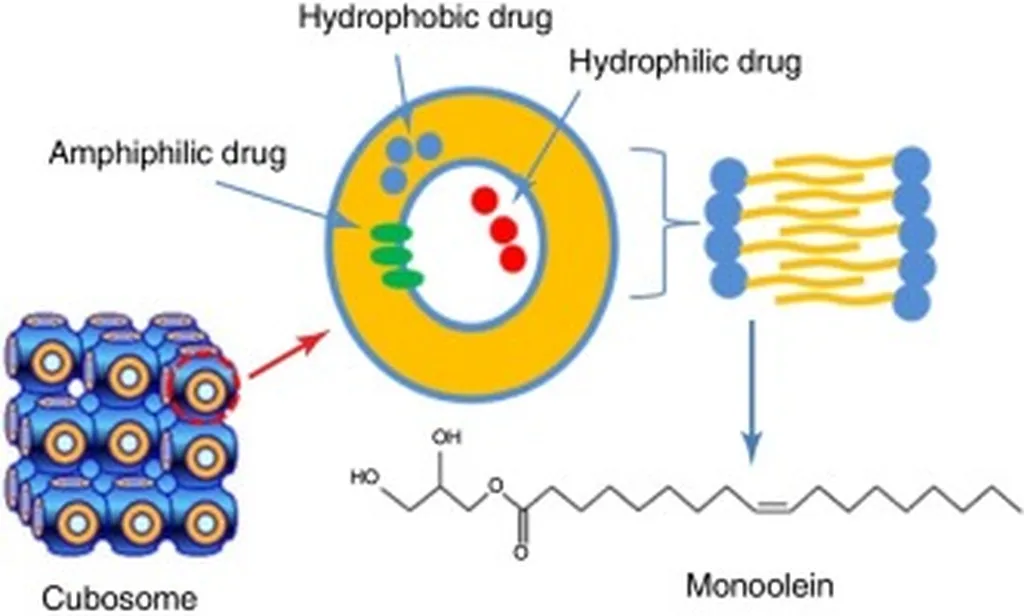In the realm of pharmaceutical innovation, a groundbreaking study published in the journal *Discover Materials* (translated from the original title) is making waves, particularly in the construction industry. The research, led by Venkatesh Chandrakala from the Department of Pharmaceutics at East Point College of Pharmacy, explores the potential of cubosomes—self-assembled nanostructures—as a revolutionary drug delivery mechanism for rheumatoid arthritis. This development could have significant implications for the energy sector, particularly in enhancing worker health and productivity.
Rheumatoid arthritis, a chronic inflammatory disorder, affects millions worldwide, often leading to debilitating pain and reduced mobility. Traditional drug delivery methods have limitations, including poor target specificity and inconsistent drug release profiles. Enter cubosomes: highly adaptable carriers that can be delivered through various routes, including oral, topical, and intravenous. These nanostructures offer promising theranostic capabilities, combining therapeutic and diagnostic functions.
“Cubosomes represent a paradigm shift in drug delivery,” says Chandrakala. “Their unique structure allows for precise targeting of inflammatory pathways, enhancing the efficacy of anti-inflammatory bioactives.”
The study highlights recent advancements in cubosome technology, focusing on improving drug release profiles, target specificity, and regulatory compliance. However, the transition from lab to clinic has been slow, necessitating further research and development.
“While the potential is immense, we must address the challenges in scaling up and ensuring consistent performance,” Chandrakala notes. “This is where collaboration between academia, industry, and regulatory bodies becomes crucial.”
For the construction industry, the implications are profound. Workers often face physically demanding conditions that can exacerbate inflammatory conditions like rheumatoid arthritis. Effective drug delivery systems could improve worker health, reduce absenteeism, and enhance overall productivity. Moreover, the energy sector, which relies heavily on a robust workforce, stands to benefit from advancements in this field.
The research published in *Discover Materials* not only sheds light on the current state of cubosome technology but also underscores the need for continued innovation. As Chandrakala and his team continue to push the boundaries, the construction and energy sectors can look forward to a future where advanced drug delivery systems play a pivotal role in maintaining a healthy and productive workforce.
In the broader context, this research could pave the way for similar advancements in other medical fields, offering new hope for patients and industries alike. The journey from lab to clinic is fraught with challenges, but the potential rewards make it a journey worth taking.

